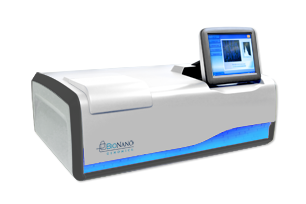Former Research Projects
Insertional mutagenesis of a coleopteran stored grain pest, Tribolium castaneum
Funding Agency: USDA
PD and CoPDs: Susan Brown, Rob Denell, Richard Beeman, Martin Klingler, and Ernst Wimmer
Project Summary:
The red flour beetle Tribolium castaneum is a cosmopolitan pest of stored grain that we have developed into a highly sophisticated genetic model organism. The genetic and genomic tools currently available for Tribolium include transformation systems based on the transposons piggyBac and Minos. We are exploiting these transformation systems to perform large-scale insertional mutagenesis and enhancer detection. Genome-wide transposon mutagenesis is being performed in labs in Manhattan, Göttingen, and Erlangen with the goal of generating and characterizing over 15,000 insertion lines. These lines will be screened for phenotypes relevant to insect pest management, such as pesticide resistance, aggregation behavior, and semiochemical production. Additionally, identified enhancers will be investigated for their usefulness in developing transgene-based insect control applications. This functional genomics approach will provide the basis for the discovery of stage- and tissue-specifically expressed genes and will make it possible to directly link DNA sequence information to biological and ecological functions. Genes discovered in this work will provide insight into resistance mechanisms as well as biosynthetic pathways and will allow the development of novel pest management strategies relevant to Tribolium, other beetles, and more distantly related insect pests.
Currently, 20,000 mutants lines have been created including lethal mutants and tissue specific mutations. The GEKU insertional mutagenesis screen database stores the results of these experiments. Lines are available upon request from the Brown Lab and the labs of project collaborators.
Rationale to sequence the genome of the red flour beetle, Tribolium castaneum
Funding Agency: USDA, NHGRI
Collaborators: Susan Brown, Rob Denell, Richard Beeman and Richard Gibbs
Project Summary:
In a world of worthy candidates, there are several compelling reasons to sequence the genome of the red flour beetle Tribolium castaneum. First and foremost, Tribolium is one of the most sophisticated genetic model organisms among all higher eukaryotes. Among arthropods, only Drosophila offers greater power and flexibility of genetic manipulation. Second, the Tribolium genome sequence will provide an informative link when direct comparisons between human and fruit fly sequences are unproductive. Third, as a member of the most primitive order of holometabolous insects, the Coleoptera, it is in a key phylogenetic position to inform us about the genetic innovations that accompanied the evolution of higher forms with more complex development. Fourth, Coleoptera is the largest and most species diverse of all eukaryotic orders and Tribolium offers the only genetic model for this profusion of medically and economically important species. Analysis of the Tribolium genome will facilitate the discovery of new pharmaceuticals and antibiotics. Additionally, it was produced to facilitate study of resistance mechanisms and improve specificity and efficacy of insecticides and biological agents to control crop pests and disease vectors. Finally, many genetic and genomic tools are already available for Tribolium. Both forward and reverse genetic approaches are available to facilitate functional genetic analysis. A molecular recombination map and a physical map based on a BAC library of ~20 x genome coverage was completed, and it will furnish the necessary foundation upon which to assemble the genomic sequence, which at ~200 Mbs is only slightly larger than that of Drosophila. The Tribolium castaneum 3.0 Assembly (Tcas 3.0) is available from the Human Genome Sequencing Center at the Baylor College of Medicine. I tis hosted at Beetle Base.

